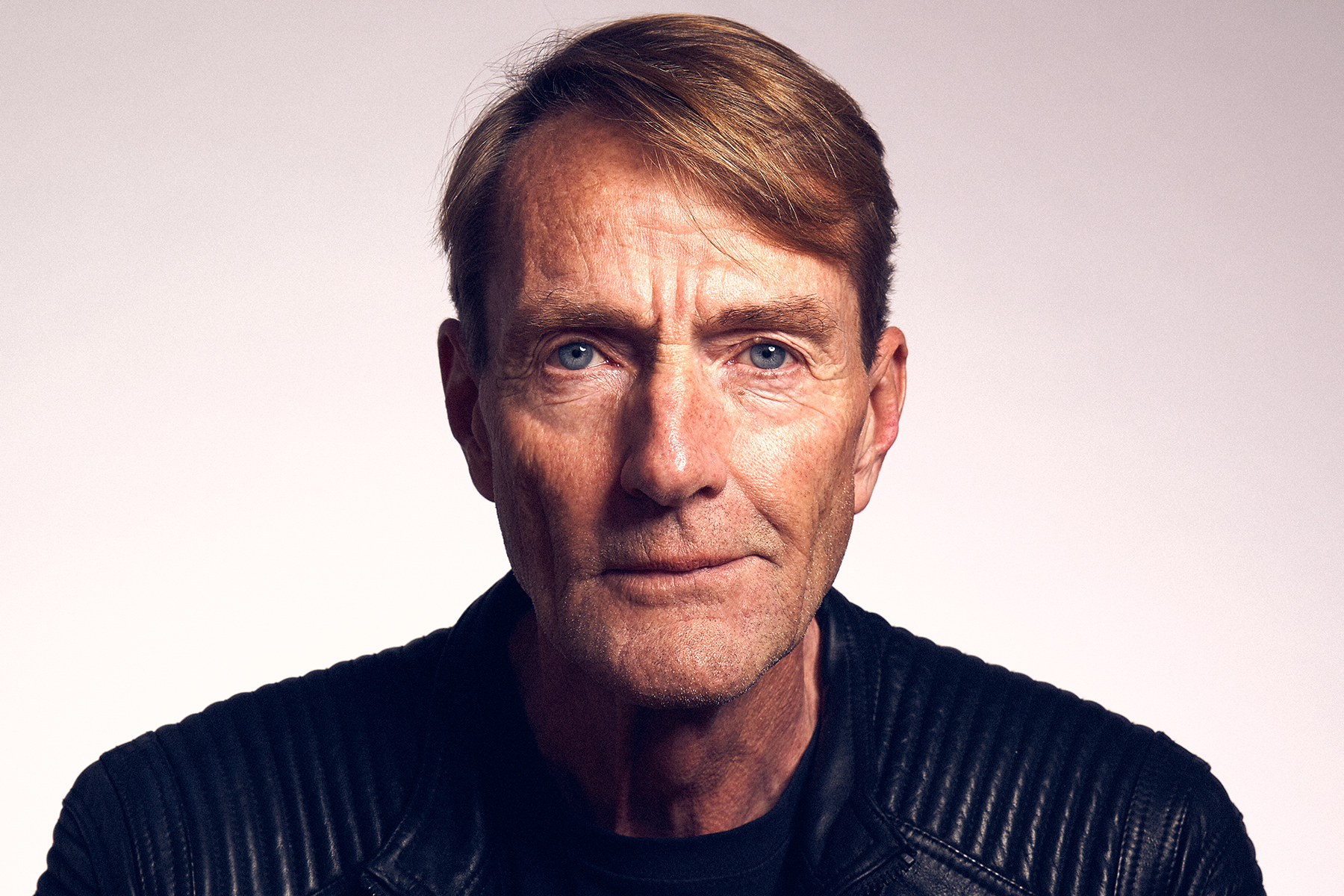
- Home |
- Search Results |
- ‘Between real and mythic’: an oral history of Jack Reacher
‘Between real and mythic’: an oral history of Jack Reacher
Redundant on the cusp of his forties, Lee Child took a wild gamble – and won. Twenty-five years after the release of Killing Floor, the creator of Jack Reacher reflects on his debut alongside the team who published his first novel.
Spring 1997, and the country was in the grip of Cool Britannia. Weeks before Tony Blair swept to power and weeks after Geri Halliwell stormed the Brit Awards in that Union Jack dress, the UK was on a patriotic upswing. And yet, in the publishing industry, an unlikely American hero was making his debut: Jack Reacher, a strong-but-silent lone ranger so off-the-record he has no fixed abode or bank account.
From the imagination of Lee Child – a newly redundant television programmer from Birmingham – sprang a muscular 6’5” ex-military policeman who would become one of the best-loved fictional characters ever to grace the page. With fists as quick as his wits, Reacher first appeared in Killing Floor, a mean and twisty thriller set in Margrave, a suspiciously immaculate town in Georgia. Killing Floor was Child’s debut, and forged his destiny: 25 years on and the British-American novelist has sold more than 100 million books worldwide, becoming as well-known as Reacher himself.
For all the violence in Child’s books, Reacher is no macho grunt: his appeal has always been neatly split down the gender divide. Readers come for Child’s short, staccato sentences, his immaculate pacing and the plot twists that only Reacher can see coming. They stay because they can’t shake Reacher. As Philip Pullman put it, in his foreword to the 25th anniversary edition of Killing Floor: “The interesting thing about Lee Child isn’t that he’s sold enormous numbers of books, but that he writes so well”.
While Killing Floor scraped into the bestseller charts, few anticipated it would be the beginning of an internationally adored, 26-strong – and going – book series in which Reacher would return, again and again, to serve justice with equal brawn and brain. Few, that is, except Child himself.
The narrative of Killing Floor is almost as intriguing and entertaining as the book itself: that of a character – and a literary creation – that emerged out of desperation and revenge with huge ambition. We spoke to those involved. This is their story.
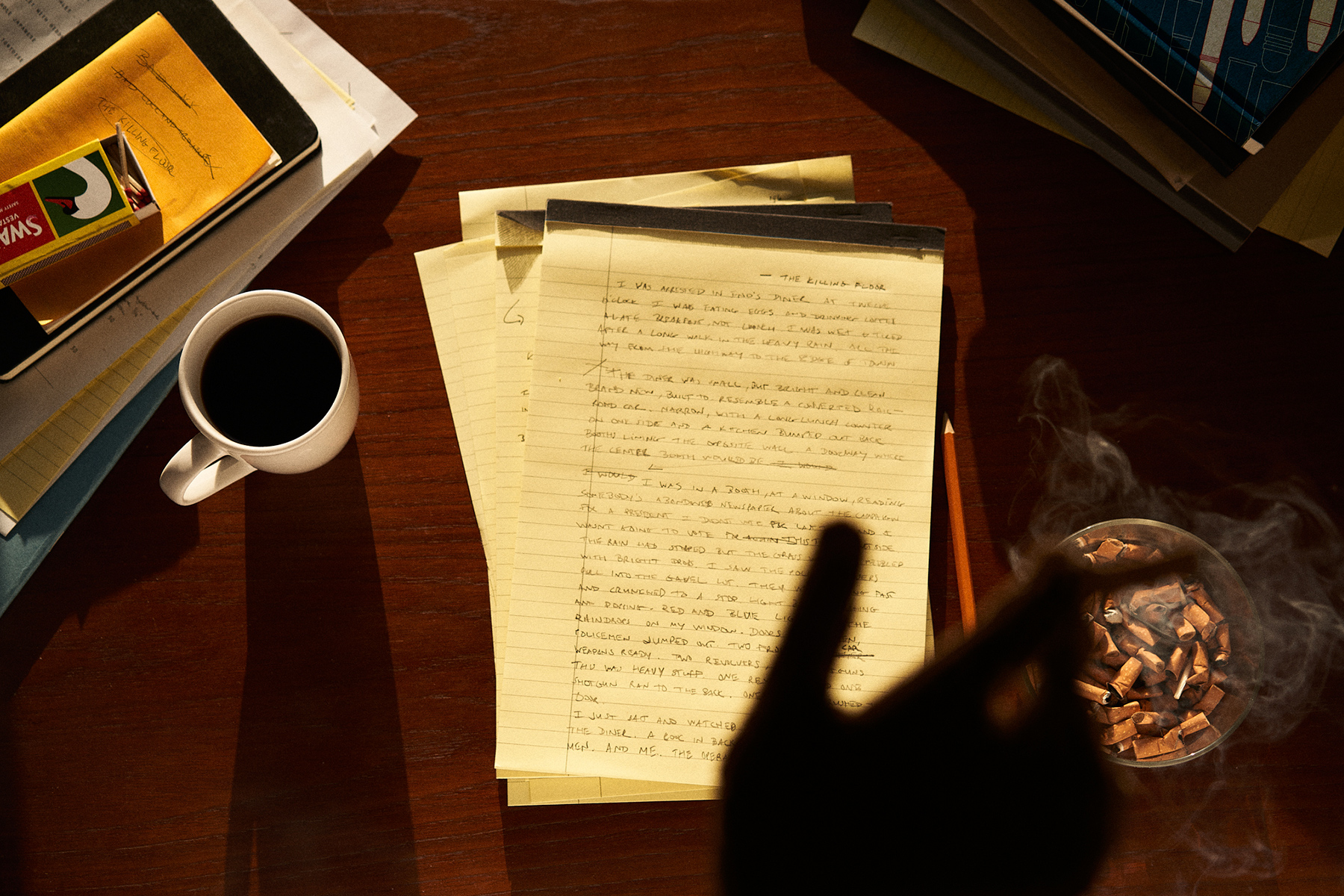
Late 1995. Lee Child is made redundant from Granada TV, where he had worked for nearly 20 years as a presentation director.
Lee Child, author: It was a really bad time. I was 39 with a mortgage, a 15-year-old daughter, car payments and credit cards. My problem was that I was hyper-trained and hyper-experienced for that one job that was now disappearing. So I had no real transferable skills. And that was a panic. My redundancy payment left me with seven months in the bank for mortgage payments and food. So something had to happen in seven months. But I had a feeling that I could try and write a book. Overall I was about 50% really, really scared and 50% incredibly, intensely excited. I just thought this could work.
Larry Finlay, Managing Director, Transworld: On the day Lee was made redundant, before he went home, he went to WH Smiths and bought some A4 lined pads and some pencils and he started to write.
Darley Anderson, Lee Child’s agent: Lee went into this business determined to be very successful, not least because of what happened to him at Granada. He wasn't going to have a second career go wrong.
Lee Child: The thing that finally convinced me that it would work was a Friday night, very early in the process. I had an idea for the scene I was going to write the next morning. But my wife said, “We’ve got to go to the store tomorrow.” And I remember thinking, “Damn, I really wanted to write that”, with exactly the same feeling of annoyance that you get if you're interrupted from reading.
Darley Anderson: He was sitting there in Cumbria writing the first chapter of Killing Floor and setting out to write a series of books that would get to number one in the US.
Lee hadn’t finished writing a manuscript yet, but nevertheless set upon finding his perfect agent – with clear objectives in mind.
Lee Child: So all I had to do was get the agent. I used that thing, called the Writers’ & Artists Yearbook, which has a list of agents in the back. I have a weird habit of reading any list in reverse. People assume that I came to ‘Anderson’ straight away, but actually it was virtually the last name that I came to. In the book, each agent describes themselves. Darley's paragraph was extremely explicit about commercial fiction and hard-boiled stories; he actually mentioned – in figures – the amount of money he'd gotten for his last debut author.
Darley Anderson: I literally was a one-man band for three-and-a-half years with an overdraft and being harassed by the bank. But in 1992 Martina Cole sent me her first novel; I sold that to Sue Fletcher at Headline for £150,000. That was my first break. Darley Anderson was an agent who talks about money and nobody else did.
Lee Child: After having waded through so many entries about poetry and somebody won the Booker Prize eight years ago or something, I thought, “Now this is a guy for me, who's down and dirty and thoroughly commercial”.
Marianne Velmans, editor of Lee Child’s 25 books: Darley was a very commercially minded new agent. At that point he was mainly doing sagas and women’s fiction.
Lee Child: I was uninformed about the book trade, but I had heard that it was very slow – that it took months to even open the letter, let alone answer it. So, because I was in this seven-month panic, I wrote to Darley way before the book was finished. I included the first part of it, and I said: “This is a book I just finished. Would you like to rep it?”
Darley Anderson: He sent me three chapters.
Lee Child: Darley's unique among agents in that he will not be beaten simply by time. Every single thing he opens and reads on the day he gets it. So he read it on the very first day and got back to me by postcard – I mean, that's how long ago this was – saying: “This is interesting, please send me the rest.”
Darley Anderson: So I read these three chapters and I thought “Bloody hell!” Then I requested the whole manuscript.
Marianne Velmans: Darley told me about this thriller writer that he was taking on because he had something special. He sent me a little chunk of a manuscript. Thrillers weren't my bag and that's not really what I was looking for. But there was something in the material that really spoke to me. I can't tell you what it was, just a gut feeling that this was something special.
'He’d already chosen his pseudonym before submitting his manuscript, which in my experience was completely unique'
Darley Anderson: She didn't publish, edit, or even read crime novels or thrillers. But she got Killing Floor.
Marianne Velmans: I realised years later that what was really pulling me in was the character of Jack Reacher. There's something so compelling about the way Lee presents him.
Lee Child: Of course, I hadn't written the rest yet. So I sent him back a letter saying: “I'm just making some adjustments to the end and I'll let you have it as soon as possible.” By adjustments, obviously, I mean writing the book. I just did it as fast as I could. Ironically, I only took one break during that intense period, which was to watch the League Cup final Aston Villa against Leeds. During the game Darley phoned me for the first time, saying, “where is it?” and I said, “Oh, you'll get it soon.”
Darley Anderson: When he sent the manuscript to me, it came under the name Lee Child. In other words, he’d already chosen his pseudonym before submitting it, which in my experience was completely unique. Why did he choose a short word beginning with ‘C’? Because at the time, that's where most of the best-selling fiction writers were on the shelves. “Lee Child” is two short words, so when it came to his name getting bigger on the book covers, there would be space.
Marianne: There was an argument about the title.
Lee: The original title was Bad Luck and Trouble which I used much later, I think for the 10th book. “Bad luck and trouble” is a line from an old blues song called ‘Born Under a Bad Sign’. It just seemed to match the mood of the book somehow.
Darley Anderson: It was renamed Killing Floor by the American publishers.
Lee: Their feeling was, don't put a negative word in the title. They asked me to come up with another title. So again, another blues song: Killing Floor.
Darley and Lee’s strategy was to sell Killing Floor to a US publisher first, in light of the book’s American setting. It was bought by Putnam, now a part of Penguin Random House, in 1996. Once the book had been edited by David Highfill, it was offered to Marianne and Transworld for acquisition.
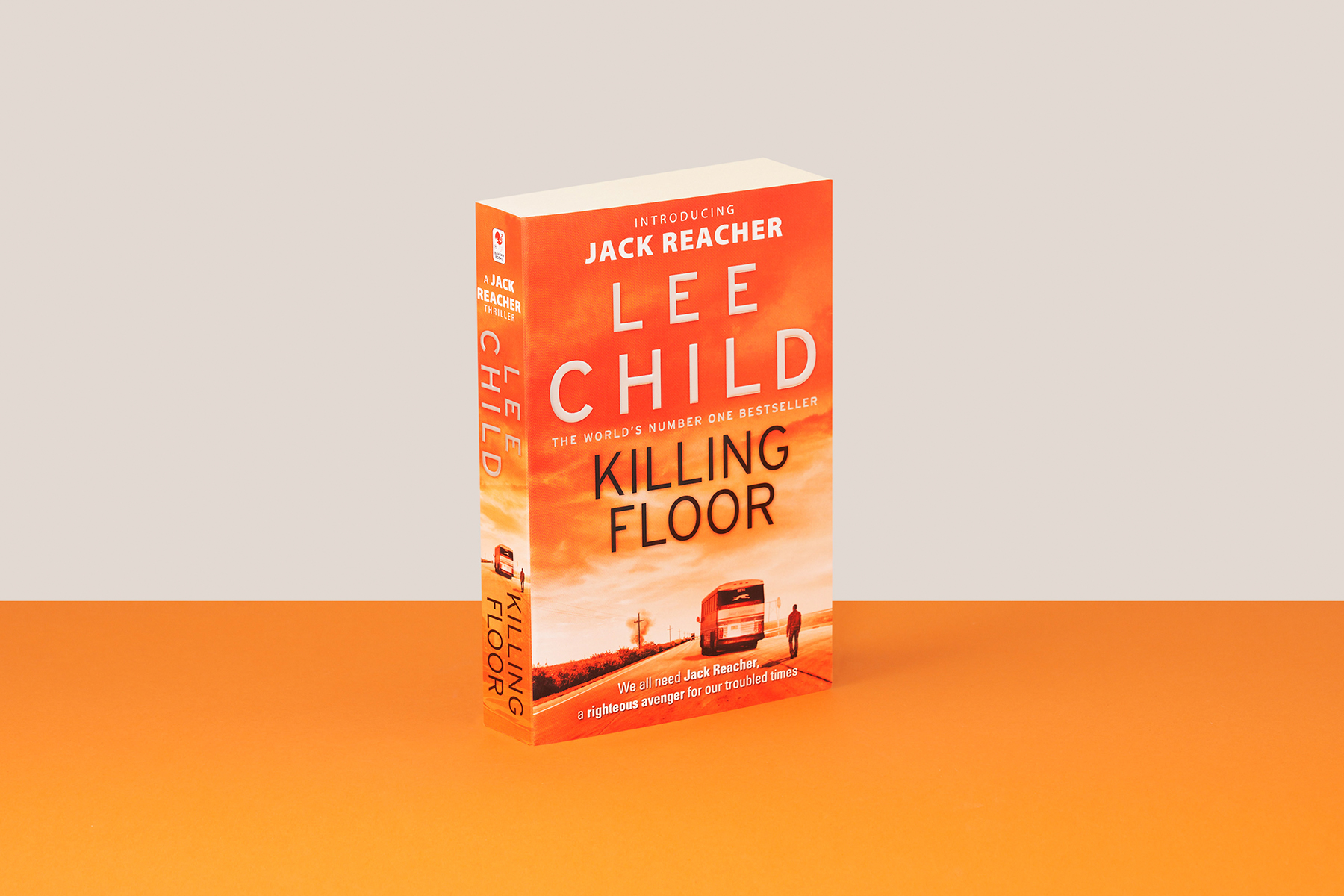
Marianne Velmans: I got this material again, more fully formed. And, again, though I didn't do thrillers, but there was something in the material. I had to have it. I shared it with a few people internally, as we always did at Transworld. Everybody got to read a bit.
Larry Finlay: I was marketing director at the time. Marianne had given me and several other people the manuscript. I read it over the weekend and absolutely loved it. I genuinely remember the feeling that it gave me, just thinking: “Oh my god. This guy is fucking sensational.” Before Marianne retired, she found the pitch documents and the Killing Floor manuscript, and I had scrawled on it: “We have got to get this guy. Seriously, seriously good. Exclamation mark, exclamation mark.” And I never normally do that. Anyone who would read it would have felt the same way.
Darley Anderson: Lee understood that the key was the character of Reacher. And the genius is that he created the character of equal appeal to men and women, not by chance, it was thought through. Women are the biggest readers of fiction. If you just write a male adventure thriller, a lot of women will leave that alone.
Marianne Velmans: I reacted the way I did, as a non-thriller reader, because of the way Lee involved women. Even though Reacher’s the most macho of creatures, from the beginning he is totally un-sexist. We all realised eventually that a lot of women were reading these books. We didn't know that at the time, but that affected the way we packaged and everything.
I just thought 'I'm gonna murder this. I can do this meeting no problem at all.'
Patsy Irwin, Publicity Director, Transworld: We always said that the thing about Jack Reacher was that men want to be him and women want to be with him. Lee’s always maintained that Jack Reacher is not interested in the sort of women who want to get married; they're very happy to have a night with him and move on. I think for a lot of women readers he represents a kind of knight in shining armour.
Lee Child: Reacher straddles the line between real and mythic. It was a nervous tightrope to walk. You didn't want to make it a cartoon character, or a superhero, but at the same time, I didn't want what everybody else was doing. I especially got fed up with the detective whose spouse is always grumbling about the job.
Marianne Velmans: I got enough enthusiastic feedback that I took it to the acquisitions meeting.
Lee Child is invited to Transworld’s then-offices in Ealing, West London, to meet with the team to help usher in a book deal.
Lee Child: I remember the date: May 22nd 1996. A big meeting with everybody at Transworld. Darley was nervous about that. He knew what was going on, which was that they were looking at me as if to say: can we work with this guy? Is this guy promotable? Is this going to be a nice relationship? So Darley was nervous about how I would perform.
Darley Anderson: I wasn’t nervous. I'd encountered enough of Lee Child by then to know what a hugely impressive guy he was.
Patsy Irwin: There was a sense that this was something big. Obviously we have author meetings all the time, but I do remember, very much, a sense that if we were to buy this author, we could pretty much see him as a shoo-in to become a bestseller.
Larry Finlay: I was a smoker then. And I took out my packet of cigarettes and said “Would you like to smoke?” Lee deliberated. And I said, “Well, if you do then we can all smoke, because if the author does, we can.” So we smoked throughout the meeting.
Lee Child: What Darley didn't know is that I was just coming off years of super high-level meetings where people's livelihoods are at stake. So I just thought “I'm gonna murder this. I can do this meeting no problem at all.”
Marianne Velmans: Lee came in and he was so sure of himself. He had worked everything out so precisely. He had an answer for everything, he knew exactly what he wanted, and he had huge ambition and we all respected that. He had a vision that he was going to beat American thriller writers at their own game.
Lee Child: I anticipated this question about how I would react to editing. And Larry specifically said: “How would you feel if we want you to change stuff?” I said, “Larry, if you give me the money, you can change every damn word”.
Larry Finlay: I asked him, “So what are the plans?” He replied: “Well, it's going to be a 21 book series”. And I remember thinking: well, that's ambitious. We'll see how it goes, Lee. I said “Why 21?” He said, “Because my absolute hero is John D. MacDonald, who wrote 21 books.
Lee Child: Somehow, in my mid-thirties, I picked up a particular series by an American writer called John D. MacDonald. The Travis McGee series. Travis McGee was basically a bum who lived on a boat and did a job whenever he needed money. So it was kind of halfway to Reacher. And I loved the books. They were really entertaining and one of the very few series that was of uniform quality across the whole span. And for the very first time, I was aware of an intelligence behind it, it was like seeing a blueprint.
Patsy Irwin: I'm sure we didn't feel at the time that it would go on for so many years. We probably thought well, I dunno, we’ll sign up three.
Darley Anderson: When I thought, where is the right place for Lee Child to be published in the UK, that Lee will respect and be the appreciative of as an effective business unit, the answer was unquestionably Transworld.
Larry Finlay: We were the only ones, but we didn't know that at the time. They sensibly made us think we were in an auction.
Darley Anderson: They were in an auction. They were in an auction with me. When I turned down the third offer, which was for £120,000 for two, they got quite irritated. In 1995, for a debut author, that was still a lot of money. I said: I will sell it to you for £150,000 for two. But they were bidding against me, they were not bidding against anybody else.
Lee Child: Out of the seven months of savings I had, I ended up with one mortgage payment left in the bank that I didn't need.
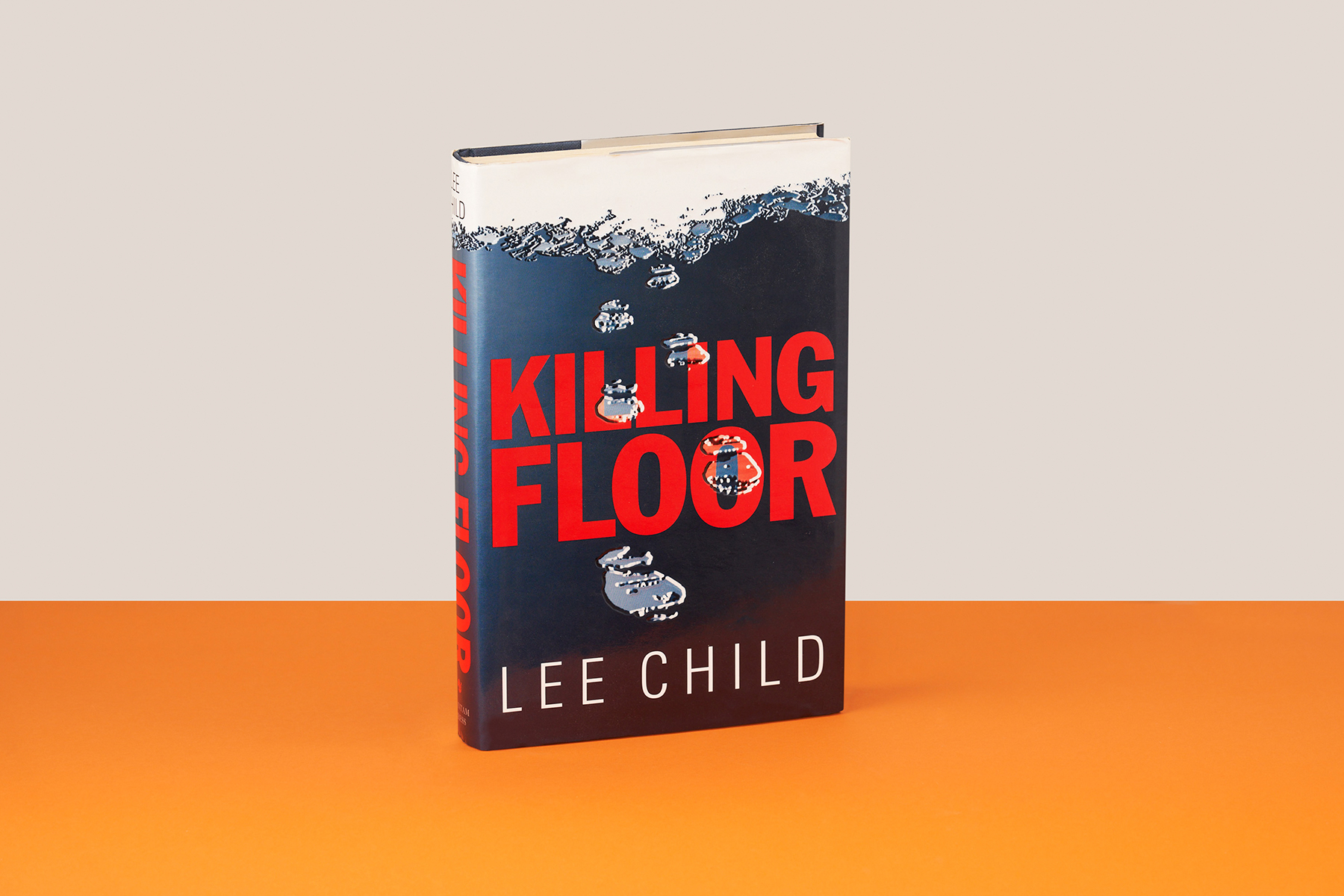
Work begins on the manuscript, design and marketing of Killing Floor. While the Transworld team had been excited by the book, there were nevertheless discussions over the level of graphic violence Reacher exerts on his enemies, and to what extent that element of the book should be represented in its packaging. There were big ambitions for Killing Floor, but the audience, reception and readers of the book were less certain.
Lee Child: I don't think there was a huge amount of changes once the final draft had been submitted.
Larry Finlay: I remember the violence, the visceral violence. Particularly the stuff in the prison.
Marianne Velmans: I might have baulked a bit at some of the extreme violence because that's not me. Of course, other readers feel differently.
Lee Child: Reacher needed to do whatever he needed to do. And some of it was awful and brutal. But I felt to squeamishly back away from that would have made the character artificial. I had to say: “Marianne, remember: Reacher is a bastard.” I think it was that warts-and-all presentation that really made people accept him as real.
Henry Steadman, designer: I was responsible for designing the Lee Child covers under the art direction of Lizzy Laczynska. We started with a fairly bold masculine thriller approach for Killing Floor using a graphical footprints motif representing the blood prints left around the scene of a murder.
Marianne Velmans: I did not like the original cover, I just didn't get it. But I was overruled, because even at that time Transworld had a totally democratic cover meeting and often the editor didn't have much of a voice. Plus the sales and marketing people liked it.
It had this belly band going around that said: “As good as Grisham or your money back”
Larry Finlay: The first cover now looks so dated, but we thought we loved it. You know, we wanted to represent violence, it's important to get across that it's a tough read. Actually, the thing we got wrong was thinking of the male audience only: it turned out pretty quickly that there was pretty much a 50/50 split across the genders. We positioned it as a very male read, which was probably a mistake.
Darley Anderson: They produced this atrocious cover for the Killing Floor. Like the footsteps of an abominable snowman? Honestly, I mean, ridiculous.
Lee Child: We didn't like the cover, to be honest. But I was very aware that this was not about the first book; it was not even about the second book, or the third - it was about the long game. And so it was not about any one particular decision. I said to them: “Are you sure?” and they said “Yeah, we're sure”. That's good enough for me. Because to be kind of bitchy about your very first cover is not a great thing for a long-term relationship.
Marianne Velmans: It had this belly band going around that said: “As good as Grisham or your money back”. It shows you that this was a very aggressive statement at the time: Grisham was absolutely the top thriller writer in the world.
Lee Child: It was exactly what I was aiming for. Grisham was huge. I mean, Grisham was the biggest author in the world, the pinnacle. I thought it was bold. I thought it was exciting.
Larry Finlay: My finance director said, “But won’t people ask for their money back?” And I said, we will get six, honestly, because he is, he is as good as Grisham. How many did we get? Six. So we wrote out six checks. That was it.
Lee was prepared to do anything. He went 50 miles out of his way to have a drink with a fan.
Killing Floor was released in the UK in April, 1997. Few people noticed – yet.
Lee Child: I really can’t remember release day. And that is one of my one of my huge regrets, to be honest: that I was always so involved in what was coming next that I did not pay enough attention. I should have noticed it more. But I was swept up in what I felt was a conveyor belt. You know, I'd done the second book. I was already writing the third book.
Marianne Velmans: We didn’t throw a party or anything.
Patsy Irwin: It was quite hard, to start off with, to get a lot of publicity for commercial authors like Lee. They are not driven by publicity because the literary establishment were not that interested.
Lee Child: I did not underestimate how difficult it was to break a book out. I remember photographing the book, using a whole roll of film: 24 pictures of the book. I would get the photos back from the shop and cut around the cover with a scalpel exactly and mail it to friends and relatives and so on, hoping that they would buy it.
Patsy Irwin: He always worked really hard. We just used to do a lot of bookshop visits and build up relationships that way.
Lee Child: I heard the booksellers liked it. There is no better reader than a bookseller, and no luckier book than one a bookseller supports with passion and enthusiasm. Then, fingers crossed, their customers will like it too, and talk about it, and look forward to the next one. All of which happened to this lucky book, which is why it's still here, I guess, all these years later.
Lee’s had many mimics and so many rip-off covers. None of them come close
Marianne Velmans: Lee was prepared to do anything. I remember that there was somebody who had written to him because he was a big fan and thought the book was great. Lee went 50 miles out of his way to have a drink with this guy.
Lee Child: I probably had half a dozen pints with readers.
Patsy Irwin: I think he felt particularly thankful to people who'd got on board right at the beginning.
Marianne Velmans: It wasn't a huge bestseller to start with. It took him several years before he hit number one.
Lee Child: That first book very briefly made it to number eight on The Sunday Times list.
Patsy Irwin: Eventually, Lee reached a kind of tipping point in sales where suddenly journalists say: “Who is this guy?” At that point we could get lots of big interviews and profiles and you’d do speaking events with hundreds of people. But that didn’t happen overnight at all.
Marianne Velmans: At the time people were really snobby about this sort of fiction, they wouldn't admit that they read it. Then I discovered that my other writers Kate Atkinson and Joanne Harris were reading these books. They wanted to be sent a proof every time, they were completely hooked on it.
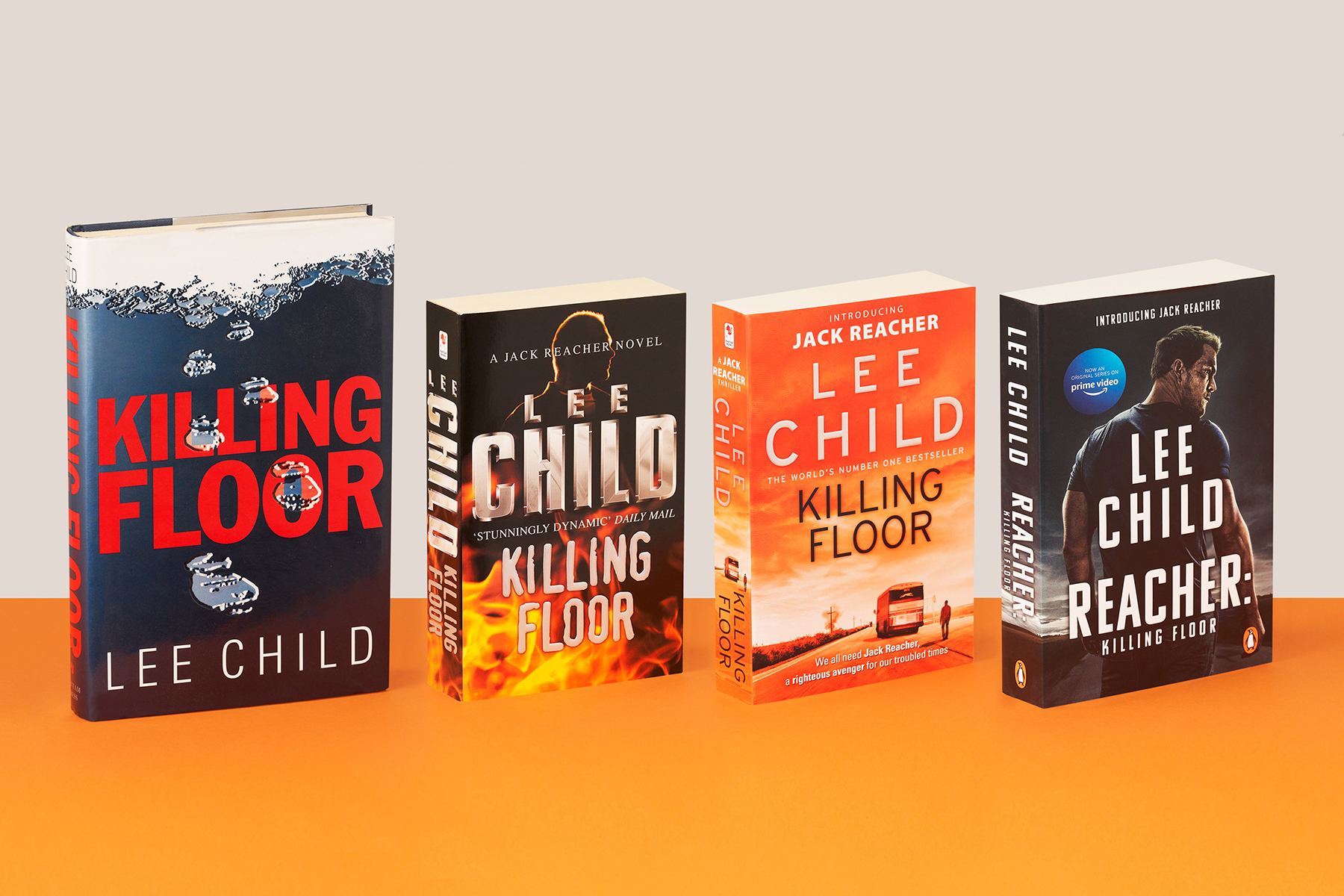
Larry Finlay: Malcolm Gladwell used to buy the paperback, then he graduated to hardback. Then he got proof copies from the publishers in the States and now he’s at stage where he gets the manuscript it before it's published. Lee is so admired by so many other writers. Philip Pullman's a huge fan. Haruki Murakami. And every thriller writer who tries to emulate him.
Philip Pullman, author: I have no idea how Lee Child goes about putting his stories together, but he’s bloody good at it.
Darley Anderson: Marianne used to ring me up and say: “Wonderful sales figures”. And I used to say to her: “That's great. But you haven't seen anything. This is gonna grow and grow and grow and grow.”
Marianne Velmans: We had a team that really believed in this writer right from the beginning. But none of us would have foreseen that he would have become as enormous as he did.
Twenty-five years on and Child’s initial ambition to write 21 novels have proved to be humble. Jack Reacher continues to take to the road, tackle baddies and move on to the next adventure after starring in 26 novels. Killing Floor has been adapted for TV by Amazon Prime.
Patsy Irwin: I remember when we invited him to the first sales conference, and Lee said: “I want to be a big, best-selling author.” Some companies might think, “Let's see how you go, buddy,” but thought: yes, he's laying down a marker. We believe in you and we think we can do this together.
Marianne Velmans: I kept my copy. It's signed to me, and the dedication reads: “My agent is Darley Anderson in London, my editor David Highfill in New York and Marianne Velmans in London. They worked hard to get this writer his break".
Larry Finlay: Lee’s had many mimics and so many rip-off covers. None of them come close. His is the original and the best. I can't think of another character series that is as beloved.
Lee Child: I never looked at Killing Floor again. I never even opened it. But just this past autumn, I annotated a copy for charity. It was exactly 25 years since I had checked the typeset pages. I went into it feeling it was going to be a bit embarrassing, that I’d be apologising for lots of bad first novel-stuff here. But actually, I thought: this is very good. That cheered me up for a day and then it depressed me the next day thinking, damn, I never got any better than my first book.
Darley Anderson: Reacher is the James Bond of the 21st century. I said that from day one. And when I did, I was laughed at. Well, no-one is laughing now. This writer and these books are iconic.
What did you think of this article? Email editor@penguinrandomhouse.co.uk and let us know.
Image: Stuart Simpson/Penguin